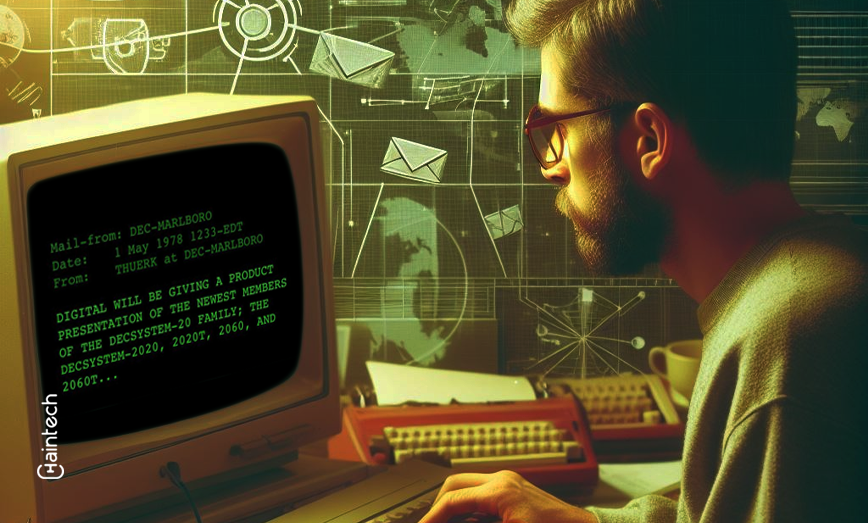Year 1986: Chaos Computer Club Breaches German Government Computer; Exposes Chernobyl Data

Chernobyl & the Chaos Computer Club
On the quiet night of April 26th, 1986, the city of Chernobyl slept peacefully until the sudden wailing of fire brigades woke them up. Looking outside their windows, the residents of Chernobyl saw a massive fire emerging from the Chernobyl Nuclear Power Plant. After several inquiries, the residents heard murmurs about a raging fire. A fire that had taken place inside the reactor no. 4 at the Chernobyl Nuclear Power Plant. What followed is a painful part of the history of the Soviet Union.
The Chernobyl Nuclear Disaster was one of the most catastrophic and lethal accidents in the history of nuclear disasters. Today, we have detailed information on all the events that took place within reactor no. 4 at Chernobyl. The number of lives it took, the genesis of the inferno, and every minutiae of the tragedy are well-documented. Even a dedicated Netflix series, “Chernobyl”, meticulously recounts the fateful night of the disaster and its aftermath.
However, back in the year 1986, such information was kept away from the public. It is claimed that at the time of the incident, the German Government disseminated misinformation and half-truths. Some believe that this was being done to reassure the public that everything was in control. However, others emphasized that transparency was owed to citizens. The Chaos Computer Club was a believer of the latter. They believed that the public deserved to know the actual state of destruction, hence, they embarked on a journey. The journey to hack the German Government Computer, that had data related to Chernobyl.
What is the Chaos Computer Club?
The Chaos Computer Club (CCC) was established in Berlin in 1981 by Herwart Holland-Moritz, better known as Wau Holland. It is the largest hacker association in Europe, with approximately 7700 members. As per their website, they have been providing information about technical and societal issues, such as surveillance, privacy, freedom of information, hacktivism, data security, and many other interesting things around technology and hacking issues.
The group is renowned for its efforts in identifying and disclosing cyber vulnerabilities. It contributes to the overall improvement of cybersecurity practices within the public domain. The members of the Chaos Computer Club are primarily individuals who come from all walks of life and are passionate about computing. At its core, the group is driven by the belief that all important information should be accessible to the public rather than being confined to government offices. Their ideology centers on promoting transparency and democratizing information dissemination. Not driven by malicious motives, their sole aim is to empower the public by facilitating the free flow of information.
The group has earned the affectionate nickname “Computer Robin Hoods”. This is due to their advocacy and actions aimed at safeguarding the interests of the general public. The label underscores their reputation for bringing forward cybersecurity causes and leveraging their expertise to benefit society. Being the most influential hackers’ association in Europe, it has multiple “hackerspaces” in and around Germany. Some of the hackerspaces are present in Hamburg, Austria, Belgium, Liechtenstein, Luxembourg, and Switzerland.
Chaos Computer Club Exposes Chernobyl Data
The Chaos Computer Club had a history of alerting authorities to security vulnerabilities within various systems. This goes back way before they exposed the Chernobyl data. Among their notable endeavors was their warning to the state-owned telecommunications company Deutsche Bundespost about security flaws in its BTX systems.
According to the founding father, Wau Holland, the Chaos Computer Club was fundamentally opposed to electronic mischief, despite their provocative name. Their primary goal was to ensure that accurate and unfiltered information reached the public domain. This principle guided their actions, including the 1986 hacking incident where they targeted a German Government computer to access data concerning the Chernobyl nuclear disaster.
During the aftermath of the deadly disaster, the group remained skeptical that the German officials were feeding the public with a lot of false reassuring statements. Fueled by their belief in transparency and public access to vital data, they took matters into their own hands. Using their hacking expertise, they hacked a German Government computer and stole hidden data to ensure that the press was well-informed. In the words of Wau Holland, “In West Germany, environmental and scientific data, census figures, and government reports are costly and difficult to get. It’s not a very democratic system. Not until Chaos gets involved. We believe we have the right of access to information, and we take it.”
The Fallout
The techniques used by the Chaos Computer Club to penetrate into the German Government’s computer systems are not explicitly detailed. Their primary objective was to unearth concealed data and information held by the government. The response from the German government following the exposure of this breach remains unclear. While it is apparent that they did not immediately address the CCC’s claims, the specific remedial actions taken are not documented in available sources.
Nevertheless, this incident served as a wake-up call for citizens, highlighting the complex relationship between cybersecurity, government operations, and the activities of hacking groups. The 1986 CCC incident stands as a historical example, underscoring the ethical complexities inherent in hacking, the vulnerabilities present in government cybersecurity measures, and the inherent challenges associated with safeguarding critical information during times of crisis.









